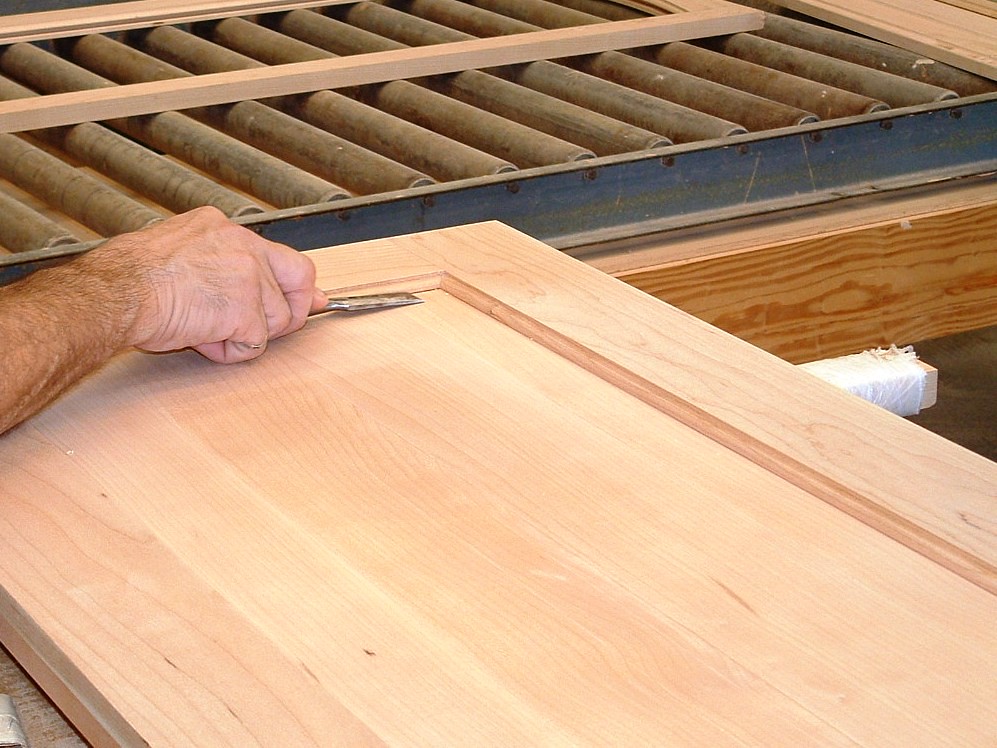If you’ve ever pondered about the thickness of cabinet doors, they are akin to the foundation of a sturdy house.
But how thick should they be to ensure lasting quality and reliability? Understanding the importance of this aspect can make all the difference in the functionality and longevity of your cabinets.
Before making any decisions regarding your cabinet doors, here are the important details that can significantly influence the overall look and feel of your kitchen.
Cabinet Door Thickness Range
When selecting cabinet doors, ensure the thickness falls within the typical range of 1/2 to 3/4 inch to guarantee sturdiness and longevity.
The installation techniques for cabinet doors heavily rely on the appropriate thickness, as it ensures structural integrity and ease of mounting.
Opting for a thickness outside this range may lead to difficulties in installation and compromise the overall functionality of the doors.
Moreover, the thickness plays a crucial role in moisture resistance. Doors with the correct thickness are less prone to warping or damage from exposure to moisture, thus extending their lifespan.
Customization options are also influenced by the thickness of cabinet doors. Thicker doors provide more flexibility for custom designs and intricate detailing.
Additionally, hardware compatibility is a key factor to consider. The thickness of the doors directly impacts the type of hardware that can be used.
Lastly, the paint finishes on cabinet doors can be affected by thickness variations.
Thicker doors may require specific painting techniques to achieve a smooth and uniform finish.
Impact of Material Selection
The durability and quality of cabinet doors greatly depend on the material selected for their construction.
Material strength plays a vital role in determining the longevity impact of cabinet doors.
When considering material selection for cabinet doors, factors such as durability, structural integrity, and longevity impact must be carefully evaluated.
Opting for materials with high durability factors ensures that the doors can withstand daily wear and tear, resulting in a longer lifespan.
The structural integrity of cabinet doors is directly influenced by the material chosen for their construction.
Strong materials contribute to the overall quality of the doors, enhancing their ability to withstand various stresses over time.
Therefore, when selecting materials for cabinet doors, it’s crucial to prioritize quality and strength to ensure that the doors maintain their durability and structural integrity throughout their lifespan.
Benefits of Sturdy Doors
For enhanced durability and longevity, prioritize sturdy doors in your cabinet design. Choosing strong doors offers a multitude of benefits for your cabinets.
The durability benefits of sturdy doors include better protection against wear and tear, ensuring your cabinets last longer.
Sturdy doors also provide structural integrity, contributing to a reliable setup in your kitchen.
By selecting doors with protection strength, you can rest assured that your cabinets can withstand daily use without succumbing to damage.
The longevity advantages of robust doors go beyond just appearance, as they support the overall functionality of your cabinets.
In essence, investing in sturdy doors not only enhances the aesthetics of your cabinets but also significantly improves their performance and lifespan.
Therefore, when considering the design of your cabinets, prioritize sturdy doors to enjoy the protection, reliability, and long-lasting benefits they bring to your kitchen setup.
Aesthetics and Functionality
Prioritizing sturdy doors not only enhances the durability and longevity of your cabinets but also significantly impacts the aesthetics and functionality of your overall kitchen setup.
When considering the thickness of your cabinet doors, it’s essential to understand how this element affects the visual appeal and practicality of your kitchen.
The aesthetics impact of door thickness is crucial in achieving a cohesive design that complements the rest of your kitchen decor.
Thicker doors can provide a sense of luxury and solidity, while thinner doors may create a more streamlined and modern look.
Furthermore, the functionality balance is key when selecting the thickness of your cabinet doors.
Optimal thickness supports the structural integrity of the doors, ensuring they can withstand daily use without warping or damage.
Design considerations play a significant role in determining the appropriate thickness, as it must align with the overall style and practicality importance of your kitchen space.
Striking the right balance between visual appeal and functionality is essential for creating a harmonious and efficient kitchen setup.
Importance of Optimal Thickness
Ensuring the optimal thickness of your cabinet doors is crucial for maintaining their structural integrity and long-term functionality.
The thickness of cabinet doors directly impacts their strength reliability and durability assurance.
Optimal thickness enhances the structural integrity of the doors, providing longevity enhancement by ensuring they can withstand daily use and wear.
Additionally, the correct thickness level contributes to design stability, supporting the overall aesthetic of your cabinets.
Adequate thickness is essential to guarantee the doors can endure constant opening and closing without succumbing to premature wear and tear.
Structural integrity is paramount for the longevity of your cabinets, as it prevents potential damage and maintains the doors’ functionality over time.
By choosing the right thickness for your cabinet doors, you’re investing in their durability and design stability, ultimately leading to a robust and reliable kitchen setup.


Leave a Reply